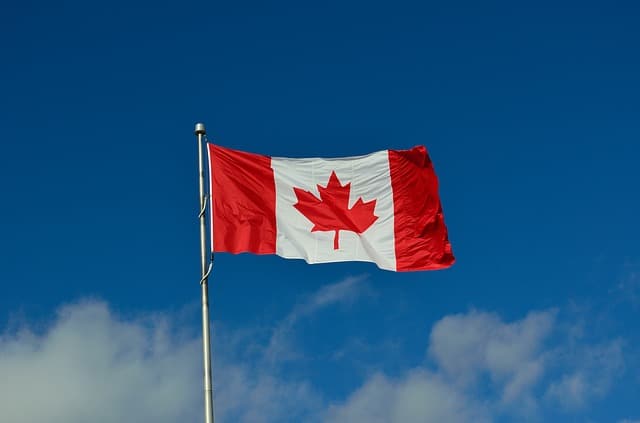The Canadian flag was introduced in 1965 and features a red 11-point sugar maple leaf on a white background bookended by a red background to the left and right of the leaf. The maple is the official tree of Canada and is one of the most commonly found trees in the country, with 10 native species grown.
Canada’s official motto is the Latin phrase “A Mari Usque Ad Mare” which translates to From Sea To Sea and the flag represents this with the red bars on the both the left and right of the flag.
Here’s a closer look at the importance of the maple tree in Canada, why the leaf was chosen for the Canadian flag and what the design of the tree represents.
The meaning of the Canadian flag
The current Canadian flag has a relatively simple design: a red-white-red color pattern with a red maple leaf with 11 points on it in the center. At the time the flag was designed and introduced, Canada had 10 provinces and 2 territories (there are 3 territories currently) and rumors have abounded as to what the 11 points on the maple leaf might represent.
Red and were proclaimed as the national colors of Canada in 1921. Red is a color symbolic of England whereas white is symbolic of France, two of Canada’s founding nations.
The maple leaf was chosen to include on the Canadian flag due to the popularity of maple trees in Canada and to represent peace and hope.
The original leaf design had 13 points but was deemed to be too “busy” looking so two points were eliminated and the final design is that of an 11 point maple leaf. So the 11 points has no real significance other than artistically.
In reality, maple trees have 3, 5, or 7 lobes and each lobe can have a varying number of points depending on the exact type of maple tree. The sycamore maple for example has distinctive points and each point has smaller edges resembling teeth that may be considered a point of sorts. Other maples such as red maple or sugar maple trees have more distinctive points that are easier to count.
History of the Canadian flag
The maple leaf has a long history of use in Canada on national symbols. The maple leaf was first used as a symbol in Canada in 1868 on the coats of arms for the Canadian provinces of Ontario and Quebec and was also used shortly thereafter on coins, Canadian Forces uniforms and other national symbols.
Canada became a country on July 1, 1867 but didn’t adopt its own unique flag until 1965. Up until that date, Canada used a predominantly red flag with a small Union Jack in the top left corner similar to other Commonwealth countries like Australia and New Zealand.
On January 28 of that year, it was officially proclaimed by Queen Elizabath II and several weeks later on February 15, the new flag was inaugurated.

The maple tree in Canada
The maple tree is well known for producing sap that is boiled down and turned into maple syrup. Canada is by far the world’s major producer of maple syrup and most of it comes from the province of Quebec.
While there are over 100 types of maple tree species globally, 10 are native to Canada:
- Sugar Maple – The Sugar Maple provides the leaf found on the Canadian flag. It is grown mostly in southern Ontario, Quebec and the Maritime provinces.
- Red Maple – Red Maples are grown mostly in central and southern Ontario and out to the Great Lakes and St Lawrence River region.
- Silver Maple – The Silver Maple is a fast-growing tree found mostly in Ontario.
- Bigleaf Maple – The Bigleaf has the largest leaf of all maple trees and is found in the southwest corner of British Columbia.
- Mountain Maple – Also known as a Dwarf, Moose or White Maple, it’s mostly found in Saskatchewan west to Newfoundland and Labrador.
- Striped Maple – Also referred to as a Goosefoot Maple, it’s a relatively small tree grown in Nova Scotia, Quebec, Ontario and Saskatchewan.
- Douglas Maple – Also referred to as Rocky Mountain Maple, you’ll find it in Alberta and British Columbia.
- Vine Maple – Grown predominantly in southern British Columbia.
- Manitoba Maple – Grows mostly in the western prairie provinces of Saskatchewan and Alberta but also in Ontario.
Maple trees are a versatile tree and one of the ways you can use it is for smoking foods. Check out my article What Are The Best Woods For Smoking Food? to learn more about maple and other trees used in smoking food.

